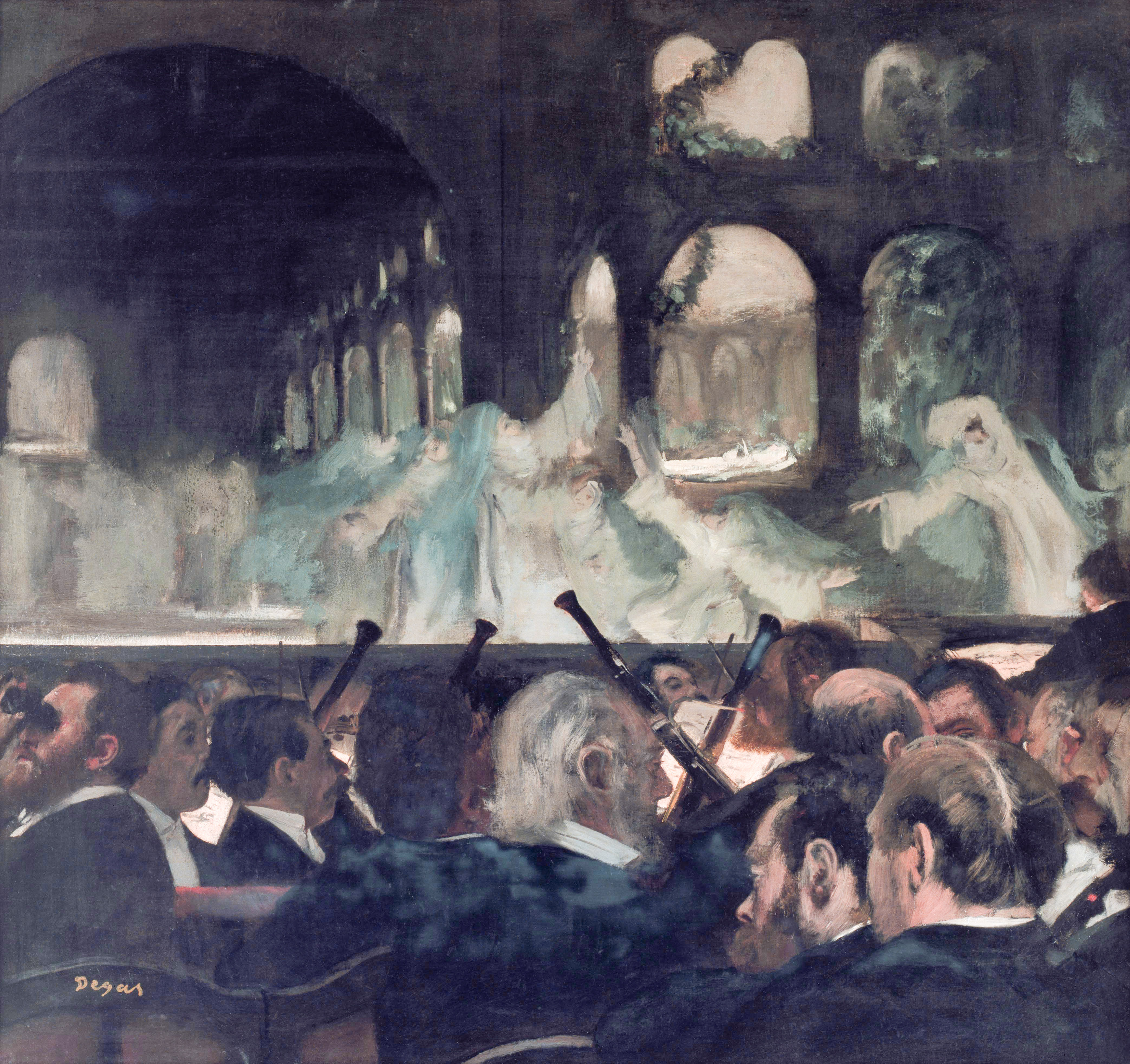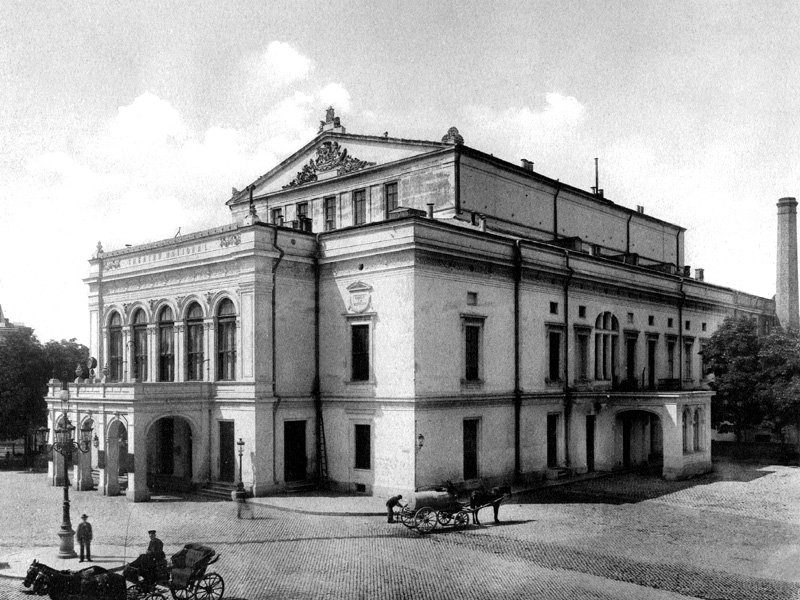|
Floria Capsali
Floria Capsali (28 February 1900 – 29 June 1982) was an Ottoman-born Romanian ballerina, choreographer and dance teacher. Life Provenance, disrupted childhood and early career Floria Capsali was born at Bitola, a midsized town and commercial centre in the hills south of Skopje, which at that time was in the ethnically and linguistically diverse Manastir Vilayet district of the Ottoman Empire and today is in North Macedonia. Capsali was of Aromanian descent. She was the elder by nine years of her parents' two daughters. Her father, Xenophon Capsali, came from a well-established mercantile family. Her uncle, who became her guardian after her father's early death in 1913, was the stage actor Ion Manolescu. Xenophon Capsali's sudden death occurred as the family was escaping to Romania in order to keep away from the ravages of the First Balkan War. During 1913 his widow and two daughters made their new home in Bucharest. Floria's mother, born Maria Manolescu, ... [...More Info...] [...Related Items...] OR: [Wikipedia] [Google] [Baidu] |
Bitola
Bitola (; mk, ذ‘ذ¸ر‚ذ¾ذ»ذ° ) is a city in the southwestern part of North Macedonia. It is located in the southern part of the Pelagonia valley, surrounded by the Baba (North Macedonia), Baba, Nidإ¾e, and Kajmakؤچalan mountain ranges, north of the Medإ¾itlija-Nأki border crossing with Greece. The city stands at an important junction connecting the south of the Adriatic Sea region with the Aegean Sea and Central Europe, and it is an administrative, cultural, industrial, commercial, and educational centre. It has been known since the Ottoman Empire, Ottoman period as the "City of Consuls", since many European countries had consulates in Bitola. Bitola, known during the Ottoman Empire as Manastؤ±r or Monastir, is one of the oldest cities in North Macedonia. It was founded as Heraclea Lyncestis in the middle of the 4th century BC by Philip II of Macedon. The city was the last capital of the First Bulgarian Empire (1015-1018) and the last capital of Ottoman Rumelia, from 1836 to 1867. ... [...More Info...] [...Related Items...] OR: [Wikipedia] [Google] [Baidu] |
Kingdom Of Romania
The Kingdom of Romania ( ro, Regatul Romأ¢niei) was a constitutional monarchy that existed in Romania from 13 March ( O.S.) / 25 March 1881 with the crowning of prince Karl of Hohenzollern-Sigmaringen as King Carol I (thus beginning the Romanian royal family), until 1947 with the abdication of King Michael I of Romania and the Romanian parliament's proclamation of the Romanian People's Republic. From 1859 to 1877, Romania evolved from a personal union of two vassal principalities (Moldavia and Wallachia) under a single prince to an autonomous principality with a Hohenzollern monarchy. The country gained its independence from the Ottoman Empire during the 1877–1878 Russo-Turkish War (known locally as the Romanian War of Independence), when it also received Northern Dobruja in exchange for the southern part of Bessarabia. The kingdom's territory during the reign of King Carol I, between 13 ( O.S.) / 25 March 1881 and 27 September ( O.S.) / 10 October 1914 is sometimes refe ... [...More Info...] [...Related Items...] OR: [Wikipedia] [Google] [Baidu] |
Grand Opera
Grand opera is a genre of 19th-century opera generally in four or five acts, characterized by large-scale casts and orchestras, and (in their original productions) lavish and spectacular design and stage effects, normally with plots based on or around dramatic historic events. The term is particularly applied (sometimes specifically used in its French language equivalent grand opأ©ra, ) to certain productions of the Paris Opأ©ra from the late 1820s to around 1850; 'grand opأ©ra' has sometimes been used to denote the Paris Opأ©ra itself. The term 'grand opera' is also used in a broader application in respect of contemporary or later works of similar monumental proportions from France, Germany, Italy, and other countries. It may also be used colloquially in an imprecise sense to refer to 'serious opera without spoken dialogue'. Origins Paris at the turn of the 19th century drew in many composers, both French and foreign, and especially those of opera. Several Italians working ... [...More Info...] [...Related Items...] OR: [Wikipedia] [Google] [Baidu] |
Enrico Cecchetti
Enrico Cecchetti (; 21 June 1850 – 13 November 1928) was an Italian ballet dancer, mime, and founder of the Cecchetti method. The son of two dancers from Civitanova Marche, he was born in the costuming room of the ''Teatro Tordinona'' in Rome. After an illustrious career as a dancer in Europe, he went to dance for the Imperial Ballet in St. Petersburg, Russia, where he further honed his skills. Cecchetti was praised for his agility and strength in his performances, as well as his technical abilities in dance. By 1888, he was widely accepted as the greatest ballet virtuoso in the world. After an esteemed career in Russia, originating such roles as both the Bluebird and Carabosse in Petipa's masterpiece, '' The Sleeping Beauty'', he turned to teaching. Some of his students included other notable dancers of the Imperial Ballet, such as: Anna Pavlova, Lأ©onide Massine, and Vaslav Nijinsky. While in London in 1920, he provided instruction to the American ballerina Ruth Page ... [...More Info...] [...Related Items...] OR: [Wikipedia] [Google] [Baidu] |
Paris
Paris () is the capital and most populous city of France, with an estimated population of 2,165,423 residents in 2019 in an area of more than 105 kmآ² (41 sq mi), making it the 30th most densely populated city in the world in 2020. Since the 17th century, Paris has been one of the world's major centres of finance, diplomacy, commerce, fashion, gastronomy, and science. For its leading role in the arts and sciences, as well as its very early system of street lighting, in the 19th century it became known as "the City of Light". Like London, prior to the Second World War, it was also sometimes called the capital of the world. The City of Paris is the centre of the أژle-de-France region, or Paris Region, with an estimated population of 12,262,544 in 2019, or about 19% of the population of France, making the region France's primate city. The Paris Region had a GDP of €739 billion ($743 billion) in 2019, which is the highest in Europe. According to the Economis ... [...More Info...] [...Related Items...] OR: [Wikipedia] [Google] [Baidu] |
National Theatre Bucharest
The National Theatre Bucharest ( ro, Teatrul Naإ£ional " Ion Luca Caragiale" Bucureب™ti) is one of the national theatres of Romania, located in the capital city of Bucharest. Founding It was founded as the ''Teatrul cel Mare din Bucureب™ti'' ("Grand Theatre of Bucharest") in 1852, its first director being Costache Caragiale. It became a national institution in 1864 by a decree of Prime Minister Mihail Kogؤƒlniceanu, and was officially named as the National Theatre in 1875; it is now administered by the Romanian Ministry of Culture. In April 1836, the ''Societatea Filarmonica'' — a cultural society founded by Ion Heliade Rؤƒdulescu and Ion Cأ¢mpineanu — bought the Cأ¢mpinencii Inn to build a National Theatre on the site, and began to collect money and materials for this purpose. In 1840, Obإںteasca Adunare (the legislative branch established under the terms of the Imperial Russian-approved '' Organic Statute'') proposed to Alexandru II Ghica, the Prince of Wallachia, a proje ... [...More Info...] [...Related Items...] OR: [Wikipedia] [Google] [Baidu] |
Dumitru Georgescu Kiriac
Dumitru Georgescu Kiriac (18 March 1866 – 8 January 1928) was a Romanian composer, conductor, and ethnomusicologist. He was particularly known for his sacred choral works and art songs which were based on the Romanian Orthodox tradition and Romanian folklore.Slonimsky, Nicolas and Kuhn, Laura (2005)"Kiriac-Georgescu, Dumitru" ''Baker's Biographical Dictionary of Musicians''. Retrieved online via HighBeam Research 26 April 2013 . Kiriac was born in Bucharest and began his musical studies at the Bucharest Conservatory (now the National University of Music) with Gheorghe Brؤƒtianu (1847 – 1905) and Eduard Wachmann (1836 – 1908). From 1892 to 1899 he studied in Paris with Vincent d'Indy at the Schola Cantorum de Paris and with Charles-Marie Widor and Gabriel Faurأ© at the Paris Conservatory. It was during this time that he began collecting Romanian children's folk songs. On his return to Bucharest in 1900 he became a professor at the Bucharest Conservatory. The following year ... [...More Info...] [...Related Items...] OR: [Wikipedia] [Google] [Baidu] |
National University Of Music Bucharest
The National University of Music Bucharest ( ro, Universitatea Naإ£ionalؤƒ de Muzicؤƒ Bucureب™ti, UNMB) is a university-level school of music located in Bucharest, Romania. Established as a school of music in 1863 and reorganized as an academy in 1931, it has functioned as a public university since 2001. It also offered training in drama until 1950, when this function was taken over by two institutes which were later reunited as the UNATC. Structure The National University of Music is divided into two faculties: the Faculty of Composition, Musicology and Musical Pedagogy and the Faculty of Performing Arts. Administratively, it is divided into the Department of Scientific Research and Artistic Activities, the Department of International Relations and European Programs, the Teacher Training Department, the Music Shows Department, and the Low-Residency Program Department (''see also Education in Romania''). [...More Info...] [...Related Items...] OR: [Wikipedia] [Google] [Baidu] |
Romania In World War I
The Kingdom of Romania was neutral for the first two years of World War I, entering on the side of the Allied powers from 27 August 1916 until Central Power occupation led to the Treaty of Bucharest in May 1918, before reentering the war on 10 November 1918. It had the most significant oil fields in Europe, and Germany eagerly bought its petroleum, as well as food exports. From the point of view of its belligerent status, Romania was a neutral country between 28 July 1914 and 27 August 1916, a belligerent country on the part of the Entente from 27 August 1916 to 9 December 1917, in a state of armistice with the Central Powers from 10 December 1917 to 7 May 1918, a non-combatant country between 7 May 1918 and 10 November 1918, and finally a belligerent country in the Entente between 10 and 11 November 1918. At the start of World War I, King Carol I of Romania favored Germany, while the nation's political elite favored the Entente. As such, the crown council took the decision to ... [...More Info...] [...Related Items...] OR: [Wikipedia] [Google] [Baidu] |
بکcoala Centralؤƒ National College
بکcoala Centralؤƒ National College ( ro, Colegiul Naب›ional بکcoala Centralؤƒ; literally, “Central Schoolâ€) is an institution of primary, secondary, and upper secondary education in Bucharest, Romania which functioned along the passing of time under many other names, most notably ''Pensionatul Domnesc de Fete''. It serves schooling for classes between 0 and XII, from primary school up to high school. During Communism, بکcoala Centralؤƒ was known as '' Zoia Kosmodeminskaia''. After the 1989 Romanian Revolution, more specifically in 1994, the school's name was changed to بکcoala Centralؤƒ and bilingual French education was introduced for the classes with both humanist and exact sciences profiles pertaining to high school. The school building, completed in 1890, is listed as a historic monument by Romania's Ministry of Culture and Religious Affairs. [...More Info...] [...Related Items...] OR: [Wikipedia] [Google] [Baidu] |





